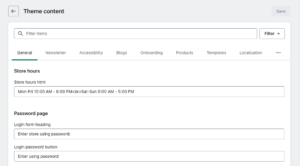Are you looking to make your email campaigns more effective? Have you heard of A/B testing but aren’t sure what it is or how it works? You’ve come to the right place! In this article, we’ll discuss everything you need to know about A/B testing and why it’s essential for your email campaigns.
A/B testing – also known as split testing – gives marketers an invaluable insight into their customers’ preferences by comparing two versions of a campaign against each other. With data-driven results from A/B tests, marketers can optimize their emails for maximum effectiveness and reach more people with targeted content that resonates with them.
At its core, A/B testing allows us to experiment quickly and efficiently in order to deliver better customer experiences time after time. This type of experimentation leads to higher open rates, click-throughs and conversions – making it a vital tool in any modern marketer’s arsenal. So let’s get started exploring the world of A/B testing and see how it can help power up your email campaigns!
Definition of A/B Testing
A/B testing, also known as split testing, is an essential tool for any email campaign. It’s a process of optimization that helps marketers identify what works best in their emails to maximize engagement and conversions. As part of the A/B testing methodology, two versions of the same email are sent out at the same time with slight variations. Marketers can then measure which version performs better based on metrics such as open rate or click-through rate.
This type of testing allows marketers to identify which elements of their emails engage readers more effectively, allowing them to adjust accordingly and improve performance over time. By constantly experimenting with different tactics, marketers can continually refine their messages until they reach maximum efficiency. This way, they know exactly what works for each target audience and ensure that every message is tailored specifically for them.
A/B testing is one of the most powerful tools available when it comes to maximizing ROI from your email campaigns. With its help, you can quickly determine which strategies work best for your particular audience and fine-tune your approach accordingly so you get maximum results from every message you send out.
Benefits Of A/B Testing
By running tests on different variations of subject lines, images, calls to action or even content structure, you can discover which elements are the most effective in driving customer response. With A/B testing you can quickly uncover insights that will help improve delivery rates, click-throughs and conversion rates—ultimately leading to higher ROI for your email campaigns.
The key benefit of A/B testing is its ability to identify what works best with a particular audience by analyzing performance data from two versions of the same message. This allows marketers to segment their audiences more effectively and create tailored messages that maximize customer engagement. For example, if one version of an email has a higher open rate than another, then it may be worth considering using that particular design when trying to reach similar audiences in the future. Furthermore, understanding how various elements contribute towards increased engagement offers valuable insight into customer behaviour that can be used across multiple channels.
By leveraging A/B testing as part of your email marketing strategy, you can gain powerful insight into what drives results while still delivering relevant experiences with each campaign. It’s also important to remember that successful optimization requires ongoing experimentation; so don’t forget to regularly test new ideas in order to stay ahead of the competition!
Goals Of A/B Testing
The key to successful email campaigns lies in understanding the goals you wish to achieve. A/B testing is an essential tool for helping marketers optimize their emails by allowing them to test different versions of a campaign against each other, and analyze the results.
A/B testing provides invaluable insights into how customers interact with your emails and can help identify which elements are driving success and which require improvement. By splitting your audience into two groups – ‘A’ and ‘B’ – you can compare the performance of one version against another, while also collecting data on engagement metrics such as open rate, click-through rate and conversion rate. This will enable you to make decisions based on solid evidence generated through split testing.
Here are 3 key benefits that A/B testing brings:
- Streamlined Campaign Optimization – Test various elements or combinations of elements simultaneously to see what works best for your specific target audience.
- Data Analysis & Insights – Track results over time and gain valuable insight into customer behavior by analyzing past successes and failures.
- Testing Results – Make informed decisions about future campaigns by using the data gathered from A/B tests, giving you more confidence in launching new ideas.
Using A/B testing allows us to continuously improve our email campaigns so that they are better tailored to meet our goals – whether it’s increasing opens, clicks or conversions!
Steps In The Process
A/B testing is essential for your email campaigns as it provides you with valuable data that can help you improve the success of future ones. To get started, there are certain steps in the process that need to be taken to ensure successful results.
The first step is to setup experiments and design tests. This includes deciding what elements will be tested against each other, such as subject line, body copy or call-to-action button colors. It’s important to think through these decisions carefully so that any change made has a measurable impact on the outcome.
Once the test is designed, it’s time to analyze the results. This involves looking at key metrics like open rate, click-through rate, unsubscribe rate and conversion rates from various versions of an email campaign side by side. By doing this, marketers can determine which version performed best and use those learnings when designing similar emails in the future.
Finally, it’s important to avoid common pitfalls when conducting A/B tests such as not having enough traffic or running too many tests simultaneously. Being aware of these issues can lead to better quality testing and more accurate results overall. Additionally, understanding different types of tests available – multivariate versus split URL vs segmentation – helps marketers make sure they’re using the right approach based on their goals.
Types Of Tests
Gone are the days when email campaigns were sent out into the world and hope for the best. With A/B testing, we now have a way to make sure our emails get seen by more eyes than ever before. A/B testing is essential for any successful email campaign as it allows us to experiment with different variations of a single message to determine which one performs better.
Split-testing is probably the most popular form of A/B testing used in email marketing today. It’s a simple process that involves sending two versions of an email to two separate groups – then measuring each group’s response rate. This helps marketers figure out what works best for their audience and also provides valuable insight on how changes in design or copy can affect performance.
Multivariate-testing takes split-testing one step further by testing multiple combinations of elements within a single message at once. By running several tests simultaneously, marketers can gain insights into how small changes such as font size, subject line length, button color, etc., may impact overall open rates and engagement levels with customers.
User-experience-testing is another type of test that focuses on providing users with the best possible experience throughout their journey from initial contact through checkout or signup processes. Funnel-testing also plays an important role here as it tracks user behavior during various stages of the customer journey while helping optimize conversion rates along the way. Lastly, time-testing ensures that your messages land in front of customers at just the right moment so they don’t miss out on any special offers or promotions you might be offering them.
The key takeaway from all this is that A/B testing should always be part of your email strategy if you want to maximize your ROI and increase conversions month after month. As long as you continue experimenting with different approaches and making data driven decisions based on results, there’s no limit to what kind of success you can achieve over time!
Designing And Setting Up Experiments
Now that we have discussed the different types of tests, let’s talk about designing and setting up experiments. A/B testing is an effective way to evaluate email design elements, such as layout, copy, subject lines and personalization options. By conducting a test, marketers can identify which version performs best in terms of engagement and conversion – ultimately helping them make informed decisions for their campaigns.
When it comes to experiment setup, there are several factors that need to be taken into consideration. First off, you must decide what element or feature will be tested. Then you should determine how many variations will be used during the test (usually two). You’ll also want to set a timeframe for running the experiment, taking into account any seasonality effects your emails may experience throughout the year. Once all these details are determined, then you can start planning out the actual test design process.
The next step is to create a hypothesis behind each variation of your email campaign and develop content accordingly. This includes deciding on appropriate images or colors; writing compelling headlines; selecting target audiences based on segmentation criteria; and constructing messages with persuasive call-to-actions that encourage recipients to take action. All this combined helps ensure your campaign reaches its full potential.
With the right mix of creativity and knowledge from A/B testing results, brands have better control over their campaigns – allowing them to reach greater heights within their digital marketing strategies!
Analyzing Results
Analyzing the results of an A/B test is critical to understanding how your email campaigns are performing. Examining data insights and interpreting the results will help you identify areas for improvement and capitalize on success. To get the most out of analyzing a/b testing, it’s important to be in tune with the nuances of result interpretation.
First, look closely at the numbers and compare them against previous performance metrics. Analyze which variations within your campaign yielded better results and note any outliers or anomalies. Once you have identified these key points, delve deeper into more comprehensive analysis by looking beyond raw data towards statistical significance. This means digging into trends over time rather than simply viewing each individual test case separately. Additionally, consider what other factors may have influenced overall outcomes such as changes in user behavior or external forces like industry competition or seasonality shifts.
By taking a closer look at the details surrounding your a/b tests, you can gain valuable insight that can inform future decision making about email campaigns going forward. Understanding not only what worked but also why something was successful enables you to develop strategies that maximize ROI while staying ahead of the curve on emerging trends and technologies in digital marketing.
Common Pitfalls To Avoid
Now that you’ve analyzed the results of your email campaigns, it’s time to learn about common pitfalls to avoid when a/b testing. A/B testing is an essential part of email marketing performance and should be split tested regularly to maximize user experience. It requires data-driven decisions based on experimentation with different variants of emails so you can understand how certain changes affect customer behavior.
However, there are some important things to keep in mind when doing this type of experiment. First, make sure you have enough sample size. You will need a large amount of data for accurate analysis. Second, don’t test too many variables at once; focus on one element per campaign and stick with that until results become clear. Lastly, set realistic goals and expectations – don’t expect drastic improvements overnight! Instead, look for incremental gains over time as more experiments are conducted. With these tips in mind, you’ll be able to optimize your email campaigns and ensure they perform at their best.
Tools For A/B Testing
A/B testing is an essential tool for optimizing your email campaigns. To get the most out of A/B testing, you’ll need to use specialized tools that are designed specifically for email optimization. There are a variety of A/B testing software and split testing tools available on the market today.
When looking for the best option for your specific needs, it’s important to consider both ease-of-use and robustness. You want something that will enable you to quickly set up tests and see results without compromising accuracy or data integrity. The right tool should also provide insight into how changes would affect key performance indicators (KPIs) such as open rates, click through rates, etc., so you can make informed decisions about what works best with your audience.
Klaviyo is a great tool for email marketing and has built-in A/B testing.
Finally, some A/B test software even offers personalized suggestions based on past performance data – giving you a leg up in making sure each campaign outperforms its predecessor. With comprehensive reporting capabilities and powerful analytics features at your fingertips, investing in quality A/B test software could be one of the smartest moves you make when it comes to maximizing ROI from your email marketing efforts.
Best Practices
A/B testing is essential for successful email campaigns. It can help you to identify what works best with your target audience and, ultimately, improve engagement rates. As an email marketing content specialist, it’s important to ensure that your emails are optimized using the most effective techniques. Here are some of the best practices when it comes to a/b testing:
Firstly, make sure that you plan ahead before beginning a/b testing. Have a clear goal in mind – such as increasing click-through rates or decreasing unsubscribe rates – so that you know what areas need improvement. Secondly, be aware of the different elements of your emails which can be tested; these include subject line length and copywriting style, placement of visuals, timing and frequency etc. Thirdly, analyze results carefully and draw meaningful conclusions from them. The data gathered from split testing can provide invaluable insights into how customers interact with your brand and allow informed decisions on future strategies.
To maximize success with email campaigns, continuously analyzing performance metrics is key—and a/b testing helps us do just that! With ongoing experimentation we can gain valuable feedback about our content and optimize our approach accordingly. By staying up-to-date on the latest trends in email marketing and utilizing A/B tests to their full potential, marketers have the power to create highly engaging experiences for their customers while reaping greater rewards in return.
Here are more tips about best practices from our friends at Klaviyo.
Conclusion
A/B testing is an essential part of any email marketing strategy, as it helps to ensure that campaigns are effective and yield maximum results. By running various tests and analyzing the data, you can optimize your emails for better open rates, clicks, conversions, and ROI. It’s important to remember to define clear goals before starting a test, use tried-and-true methods such as split testing or multi-variate testing, analyze results carefully, and avoid common pitfalls like failing to consider variables other than those being tested. With these tips in mind – plus the help of powerful tools available today – there’s no excuse not to make A/B testing a key component of your email marketing program!
Here’s to the success of your future campaigns! As an email marketing specialist, I’m here to provide guidance every step of the way so that together we can achieve amazing things with your emails. Let me know how I can support you on this journey – my door is always open.
Thanks for taking the time to learn about A/B testing and its importance in email campaigns. Now let’s get out there and start optimizing those emails!





